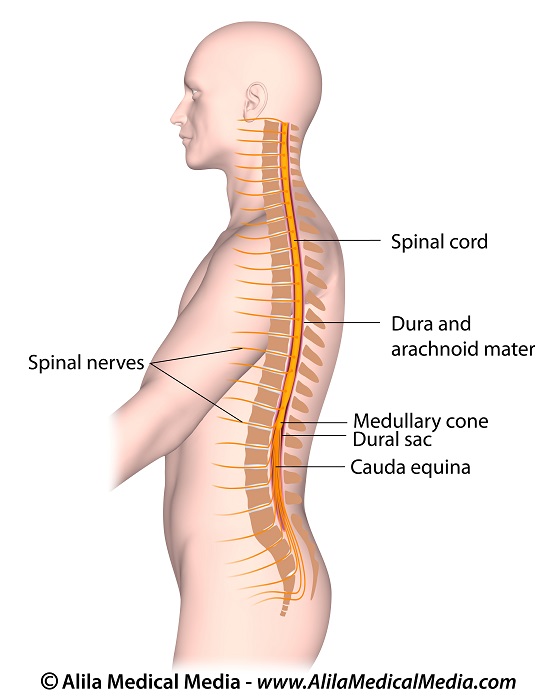Spinal Cord - Tracts and Pathways Explained Clearly
Basics of Spinal Tracts explained in 5 min with 3D animation - It's mind-boggling how simple it is!
This lesson includes an animated video lecture, downloadable images, quiz questions and a PDF
The spinal cord is the communication gateway between the brain and spinal nerves, which innervate the trunk and limbs.
The cord is a long, thin tube of nervous tissue, enclosed in 3 membranes of the meninges (pia, arachnoid, dura) which, in turn, are protected within the bones of the vertebral column.
The 31 pairs of spinal nerves arise from the cord and emerge from the vertebrae.
The spinal cord extends from the brainstem to the level of upper lumbar vertebrae. In the lower lumbar and sacral regions, nerve roots descend within the spinal canal before exiting, forming the cauda equina.

In cross section, two types of nervous tissue can be seen in the spinal cord: a butterfly-shaped central core of gray matter, and a surrounding white matter:
- The gray matter contains cell bodies and dendrites of neurons. This is where neurons synapse and transmit information to each other.
- The white matter, on the other hand, is made of bundles of axons, and serves to conduct information up and down the cord. These bundles are organized into specific groups with specific functions, forming the so-called spinal tracts. Spinal tracts are essentially high-speed cables, each carries a certain type of information, in a one-way traffic, between the spinal cord and a certain area in the brain.
Subscribe to our "Anatomy and Physiology" course below to continue!
This content is available within the following courses:

Anatomy and Physiology: More than 80 animations, plus downloadable PDFs, downloadable images, and quizzes.

Anatomy and Physiology: More than 80 animations, plus downloadable PDFs, downloadable images, and quizzes.